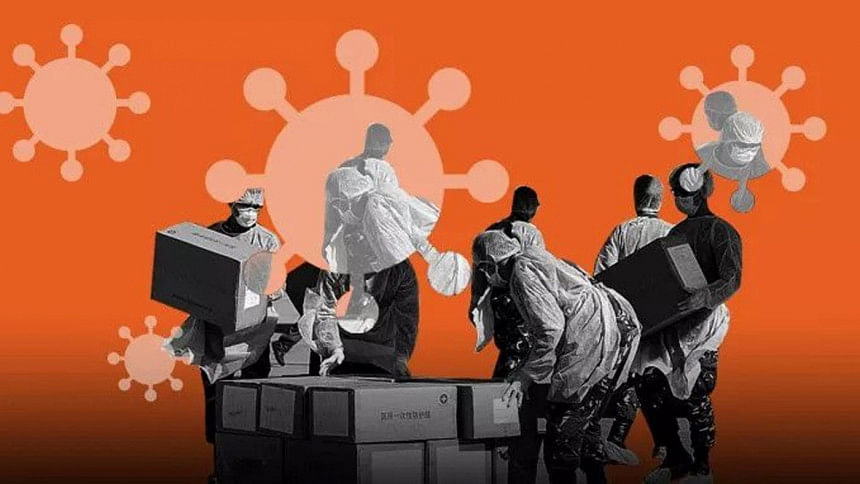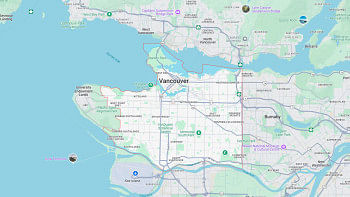Decentralising public health for post-Covid recovery

The coronavirus has had a disproportionate impact on developing countries such as Bangladesh. Although the number of cases and fatalities has been higher in developed countries, the absence of a sufficient surveillance and reporting infrastructure has meant that the toll of the virus in informal communities, peri-urban areas and secondary cities remains untold. Developing countries are also disproportionately impacted economically, with many poor households losing their jobs due to the coronavirus induced slowdown of the global economy, and not possessing the kind of jobs or technological capacity to engage in working from home, or the assets to buffer against economic shocks. Bangladesh in particular remains highly vulnerable in being able to address both the health and economic issues relating to the coronavirus.
Despite this, secondary cities (cities with populations in between 50,000 and three million) can improve Bangladesh' resilience to external shocks by diversifying economic opportunities and supporting the social environment. Critically, Bangladesh's secondary cities can relieve demand pressures on existing urban infrastructure in places such as Dhaka. This does not entail a relocation policy, but rather local investment and providing the stimulus to allow these cities to establish their own comparative advantages. Above all and in light of the pandemic, significant investment must be made in health infrastructure to create an enabling environment for growth in these areas and provide an opportunity for populations becoming increasingly displaced and disenfranchised by climate change.
In terms of healthcare, Bangladesh is crippled by an overwhelmed health infrastructure that remains highly concentrated in major metropolitan areas such as Dhaka or Chattogram. Although secondary cities constitute 40 percent of Bangladesh's urban population, state investment in its health infrastructure remains lacking. The absence of healthcare services has meant that citizens have been denied healthcare during a pandemic. The lack of healthcare in secondary cities presents a bidirectional problem; it prevents access to coronavirus-related treatment but also compromises the ability for epidemiologists to undertake effective surveillance of the coronavirus or other endemic diseases. In secondary cities such as Dinajpur, the absence of public hospitals has resulted in the private sector filling this void, leading to large out of pocket expenses and denying most people access to healthcare.
In order to remedy these issues, additional healthcare infrastructure is required in Bangladesh's secondary cities. These cities can act as crucial sites for applying therapeutic treatments for complex and critical-level coronavirus cases. With secondary and tertiary healthcare services in major metropolitan cities already reaching capacity, building healthcare infrastructure in secondary cities can reduce the demand for specialised healthcare services in Dhaka, and reduce the need for patients to unnecessarily contribute to the community spread of coronavirus whilst seeking treatment.
In addition, deploying healthcare services in secondary cities will contribute to the monitoring and surveillance capacity of epidemiologists. By boosting local testing capabilities and providing additional healthcare services which can identify and report new coronavirus cases, epidemiologists will have more eyes on the ground to determine the prevalence, extent and severity of the disease on the local population. The clustering of private healthcare services around public healthcare institutions can directly address capacity constraints surrounding testing. However, investments must be made in secondary cities so that an enabling environment is created for new private healthcare firms that can effectively complement healthcare service delivery. In addition, these services must be coordinated so that duplication of services do not occur, and that healthcare services can be delivered at a competitive price to the consumer.
Importantly, this decentralisation of healthcare services in secondary cities must be supported with consistent health guidance, policy and standard operating procedures that are enforced across public, private and NGO healthcare providers. Given the extent of fragmentation in the Bangladesh healthcare system across public, private and NGO providers, this will provide an added layer of complexity. However, failure to develop policy coherence can hamper healthcare delivery and surveillance, provide poor data to develop health policy and result in negative patient outcomes for communities in secondary cities and remote areas. Health authorities not only perform infrastructure building, but also provide policy coherence at a national level.
From an economic perspective, the outbreak of the coronavirus has had a significant impact on Bangladesh's economy, especially in cities that are export-oriented. The lack of job opportunities in secondary cities have resulted in a concentration of people in the major metropolitan centres of Dhaka and Chattogram for work. The liberalisation of Bangladesh's economy has fuelled a demand for labour in export-orientated industries such as the garments sector. For decades, the supply has been met by rural migration resulting from declining agricultural productivity due to climate change. With the economic shutdown associated with the coronavirus, disrupted supply chains and reduced demand have heavily impacted Bangladesh's export-oriented industries, resulting in many urban households migrating back to rural areas in search for alternative sources of income and due to pre-existing social ties to the community. With this brings the spread of the coronavirus from metropolitan areas to the small villages of Bangladesh. In addition, vulnerable populations who are seeking transport back to rural areas face exploitation as traditional modes of transport (i.e. rail infrastructure) cannot meet demands or are subject to domestic travel restrictions.
In the face of the coronavirus shutdowns and climate change, Bangladesh's secondary cities can play an important role as sites of new economic opportunity during the post-coronavirus recovery. No single policy can build a sustainable city overnight. Rather, sustainable cities thrive where there is a stable regulatory environment, a robust and diversified economy, a supportive social environment and a clean physical space. A decentralised approach will be vital in achieving this aim and will require the delegation of authority from central to local governments. Accordingly, the government will play an important role in facilitating a supporting array of public policies which have an overarching objective of creating sustainable, secondary cities. Such policies ought to be in the forefront of the minds of policymakers and government officials alike, particularly within the present climate. With Dhaka already reaching its limit in terms of carrying capacity, secondary cities across Bangladesh are well placed to absorb climate change migrants and create diverse economic opportunities. The coronavirus makes addressing displacement, particularly with respect to resettlement, public health and employment, more urgent than ever.
It is to be noted that although planned resettlement may appear a novel policy solution, planned relocations have been implemented by other developing country governments to mixed success. According to the World Bank, regional development policies such as Export Processing Zones have fared well where there is already close proximity to established markets, with isolated zones performing poorly in Bangladesh. A revision of existing policy to help build a supportive environment to encourage voluntary resettlement to secondary cities is vital. Critically, adequate investment in human capital and innovation, as well as supporting infrastructure such as healthcare, promote local economic activity and can generate employment and allow secondary cities to identify their natural competitive advantages.
In this context, Bangladesh's secondary cities will play a critical role towards the transition to a middle-income economy and post-coronavirus recovery. The Bangladesh government has initiated a broad-based urban development policy which has focused on building Bangladesh's secondary cities to provide new job opportunities and build upon health infrastructure. The seventh Five Year Plan outlines a stronger emphasis on developing integrated health and urban planning policy, improved healthcare service delivery and the decentralisation of facility management. The Perspective Plan of Bangladesh 2010-21 also calls for health facilities to be taken to the people's doorstep by constructing new local primary healthcare services in rural communities. These policies are a step in the right direction to address many of the drivers that have contributed to the disproportionate impact of the coronavirus in Bangladesh, both from a public health and economic perspective.
The new challenge is how to implement such an ambitious programme in the context of the coronavirus, which has impeded the ability of the government to implement new, integrated healthcare and urban renewal policies. However, with a focus on good governance and ensuring policy coherence and mobilisation, Bangladesh can begin to take steps to implement the necessary integrated urban renewal and healthcare service delivery reforms in its secondary cities.
Dr Shawkat Alam is a Professor of International Law and Director of International Engagement at Macquarie University, Sydney, Australia.
Email: [email protected]

 For all latest news, follow The Daily Star's Google News channel.
For all latest news, follow The Daily Star's Google News channel. 



Comments